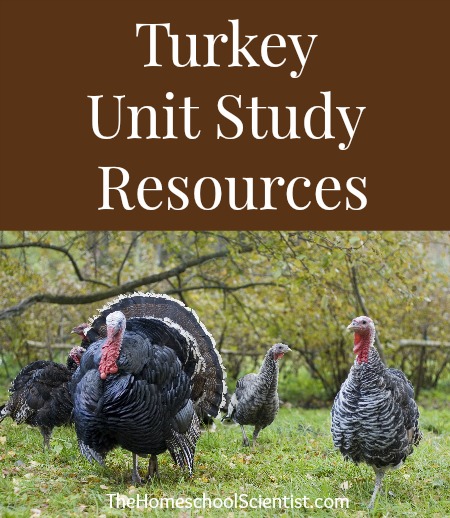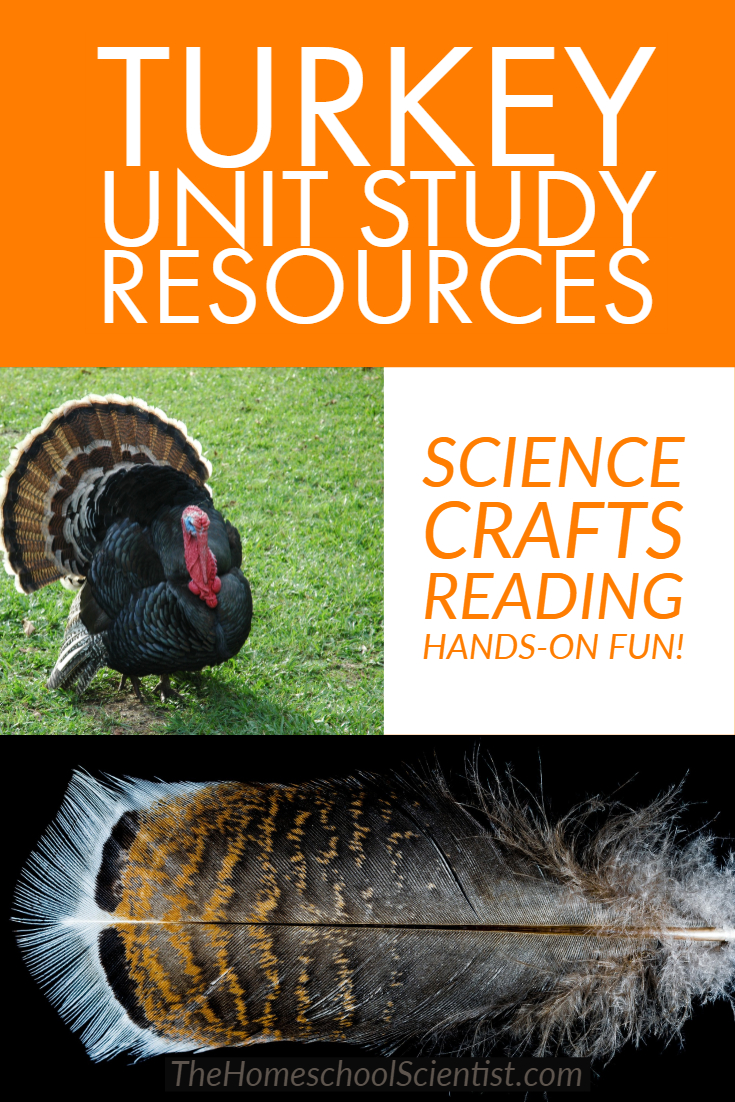Turkey Unit Study Resources

Each November, we study the pilgrim story, the first Thanksgiving, American Indians and all that we have to thank the Lord for. This year, we are adding something new. We are doing a short study on another very important part of Thanksgiving – turkey! Yes, we planning a Thanksgiving Turkey Unit Study!
Related post: Thanksgiving STEM Activities
Turkey Facts
- The wild turkey is the only type of poultry native to North America
- Wild turkeys and the domestic turkeys we buy at the store are related, but different in several ways
- Domestic turkeys are much larger than wild turkeys. They are bred to have much larger breast muscles, therefore they domestic turkeys cannot fly.
- Wild turkeys have dark feathers, while domestic turkeys are bred to have white feathers so that there won’t be dark spots on the skin.
- Wild turkeys are fast. They can fly short distances up to 55 miles per hour and run up to 20 mph.
- Only male turkeys (toms) gobble. The hens make a clicking sound. Hear wild turkey calls HERE.
- Turkeys have excellent hearing and can hear sounds from miles away.
- The turkey’s eyes are on opposite sides of its head allowing it to see 2 objects at once and giving it an excellent nearly 360 degree field of view. However, this makes their depth perception weak.
- Each Thanksgiving, 675,000,000 pounds of turkey are eaten in the United States. That’s a lot of turkey.
- Use the FREE Animal Report Printable to research and record turkey information
Turkey Anatomy
- Beak – an extension of the bird’s jawbone covered in keratin used by birds to pick up food and water and for grooming
- Snood – fleshy growth of skin that hangs over the turkey’s beak. It turns bright red when the turkey is upset or during courtship.
- Caruncle – fleshy growth of skin on the throat area of the turkey. (sometimes called the wattle) It turns bright red when the turkey is upset or during courtship.
- Beard- a tuft of long course feathers coming from the center of the breasts of male turkeys
- Gizzard – a muscular part of the turkey’s digestive system that grinds the turkey’s food since they don’t chew
Turkey Books
Turkey Science
Turkey Printables
Turkey Crafts
Turkey Links
- Wild Turkey Hen and Chick video
- Infographic describing effects of genetic modification on domestic turkeys
Turkey Study and Information
- Wild Turkey information from Bird Watching Daily
- Turkey Facts
- Turkey Lesson Ideas
Bird Study Resources
Keep on with the theme with these bird study resources!
- Why Study Backyard Birds?
- Bird Unit Study
- Bird Watching Journal from The Homeschool Scientist
- Notebooking Backyard Birds



